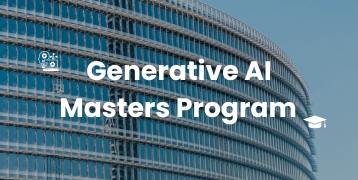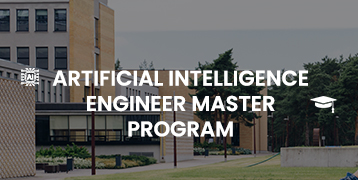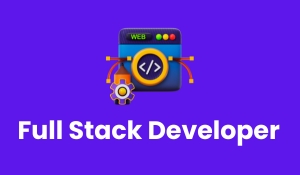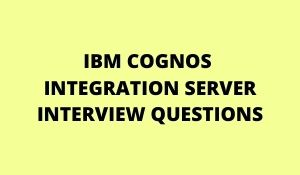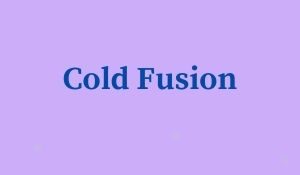
1. What is Cold Fusion?
ColdFusion is a commercial rapid development framework by Adobe. It was developed by J. J. Allaire in 1995 to provide an easier way to connect static HTML pages to databases. It is completely written in Java programming language that provides expressive and powerful web development.
2. What is a reactor in Cold Fusion?
The reactor in ColdFusion is used to monitor the production server continuously. It will monitor, diagnose, and analyze application and server issues. It was implemented as a Java agent and released first in 2005. Since its release, the reactor has been popular among some of the largest organizations in the world.
This proprietary performance monitor is available for all the major operating systems such as Linux, Mac OS, Windows, and UNIX.
3. How to clear the cache in ColdFusion?
You can go to the caching page in the server settings to clear the cache. You can click the “clear template cache now” button to clear the cache. You can also choose the “clear folder specific template cache” to clear the cache from individual folders.
4. Enlist various cold fusion variable types.
The different data types in the Cold fusion are:
•Integers: They are used to store whole numbers.
•Real Numbers: They are the floating-point numbers.
•Strings: They are used to store a sequence of letters, symbols, or characters.
•Booleans: They are “true” or “false” values.
•Date-time: They are the data or time values.
•Lists: It consists of multiple strings separated by a delimiter.
•Arrays: It is a complex data type. Some other types present in Cold fusion are Structure, queries, binary, and object.
5. How to set global variables in cold fusion?
The application.cfc file is used to set the global variables in the Cold fusion.
6 . What are request variables in cold fusion?
The request variables in the Cold fusion are used to store the processing data of the page request. The data stored in the request variables can be easily passed to the nested tags, and then processed.
//example
<CFSET Request.field_name1 = “value”>
<CFSET Request.field_name2 = “value”>
<CFSET Request.field_name3 = “value”>
Related Courses
| Course Name | Enroll Now |
|---|---|
| Oracle Cloud Technical Training | Enroll Now |
| Oracle Commerce Cloud (OCC) Training | Enroll Now |
| Oracle Configurator Training | Enroll Now |
| Oracle CPQ BML Training | Enroll Now |
| Oracle CRM Training | Enroll Now |
7. What are the different types of scope in cold fusion?
The different types of scope available in the ColdFusion are:
•Variables: Variables are available only during the execution of the template.
•URL: URL variables are available only for the current request.
•Form: Form variables are only available for the current request.
•CGI: CGI variables are available only for the current request.
•Query: The data stored in the pointer are available for the current request.
•Server: The server scope is available across all the requests until the server shuts down.
•Application: The application variables are used by all the connected clients for current applications.
•Session: The session scope is available only to the current session and can persist until the termination of the server or application.
•Request: The data in this scope is available to the current request.
•Arguments: This scope is mutually exclusive with the local function scope.
•Attributes: This scope is available during the lifespan of the custom tag.
•Local: This scope is mutually exclusive to the argument scope.
8. What is the default time-out for session variables in cold fusion?
The default time-out for the session variable in Cold Fusion is 20 minutes but you can change this time on the memory variable page in the server settings present in the Cold Fusion administrator.
9. List different types of errors in cold fusion.
There are three different types of error present in the Cold fusion:
•Exception error: It occurs when an error stops the request from completing its process.
•Missing Template: This error occurs when an HTTP request for a page cannot be found.
•Form Field Data Validation: This error occurs when server-side form validation fails.
But the most common type of error you get with Cold Fusion is the Exception type error.
10.What onsessionstart() do in cold fusion?
The on-session start function in Cold Fusion is used to initialize the session scope data or session-specific application scope variables. This method can also access the variable scope of the application.cfc file has a Request method. It doesn’t return any value and runs when a session starts.
//Syntax
<cffunction name=”onSessionStart” returnType=”void”>
…
</cffunction>
11. What are flash forms in Cold fusion?
Flash Form is generated by the Cold fusion automatically from the CFML code, using the tag. It is like an HTML form but has a Flash format and runs on the Flash player-enabled web browsers. It is used to enhance the user experience with features such as accordion-style, multiple-tab form panes, and positioning of elements automatically.
12. Enlist a few advantages of Cold fusion.
Below are a few advantages of using ColdFusion:
•It is easy to use.
•Provides high performance at runtime
•Easy to Integrate
•Inbuilt user interface elements
•Supports .Net objects
•Integration with other tools.
13. For what Cold fusion is used?
ColdFusion is mainly used for creating data-driven websites however you can it for creating REST web services.
14. What is Application.cfm in Cold Fusion?
Application.cfm contains a set of codes that we want to execute on every page of the app. Whenever a request for any page is received by the Coldfusion application then it searches the page directory for Application.cfm.
Application.cfm file can be used for setting application names, enabling and disabling sessions, setting timeouts, storing client variables, defining application global settings, and much more.
15 . What is a component in Cold fusion?
A component in ColdFusion is an independent file that contains data and functions. You can think of ColdFusion Components (CFCs) similar to Classes in other object-oriented programming languages.
All components in ColdFusion are wrapped into a <cfcomponent> tag that contains one or more <cffunction>s tags.
16 . What is the use of the CFX tag in Cold fusion?
CFX tags in ColdFusion are custom tags written in Java or C++ programming language to extend the functionality of the ColdFusion framework.
👉 Related Articles:
🎯 How to Move to Oracle PBCS
🎯 Importance Of Oracle Fusion Cloud Technical
🎯 Introduction to CPQ BML
🎯 Introduction to Oracle Apex
🎯 Key Features of Oracle Integration Cloud



